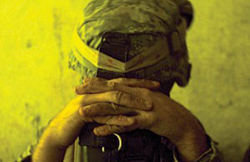By Kelly Patricia O’Meara
November 19, 2013
The U.S. Attorney General, Eric Holder, recently announced that the rate of mass shootings in the U.S. is increasing. Although the information could hardly come as a surprise to most Americans, what is interesting is that the nation’s top cop provided no clues as to what may be causing this severe increase in deadly violent acts.
As Holder reported, the annual number of mass-shooting incidents in the U.S. has tripled since 2009 and, remarkably, the average number of shootings has increased from 5 per year before 2009 to 15 per year since.
While the data about the ever-increasing random shootings is important, it doesn’t mean spit unless someone in a position of power is willing to seriously question what is causing the violent behavior. A beginning point might be to ask if there is a common denominator among the shooters.
For instance, at the same time that mass-shootings have increased in the U.S., so has the use of prescription psychiatric drugs. If one considers this list of well-publicized shootings between 1999 and 2013, it is clearly evident that the majority of these shooters were either taking, or strongly suspected of taking, mind-altering psychiatric drugs.
The data that reinforce the psychiatric drugs and violence connection is overwhelming.
- Between 2004 -2012 there have been 14,773 reports to the US FDA’s MedWatch system on psychiatric drugs causing violent side effects including, 1,531 cases of homicidal ideation/homicide, 3,287 cases of mania and 8,219 cases of aggression. The FDA estimates that less than 1% of all serious adverse events are reported.
- A PLOS One study, based on FDA adverse event drug data, authored by Thomas J. Moore, Joseph Glenmullen and Curt D. Furberg, found that “acts of violence towards others are a genuine and serious adverse drug event associated with a relatively small group of drugs.” Verenicline (Chantix) and antidepressants with serotonergic effects were the most strongly and consistently implicated drugs.
 There are 22 international drug regulatory warnings on psychiatric drugs citing effects of mania, hostility, aggression, violence and even homicidal ideation.
There are 22 international drug regulatory warnings on psychiatric drugs citing effects of mania, hostility, aggression, violence and even homicidal ideation.
- Psychiatrists prescribe antipsychotic drugs to children in one third of all visits, which is three times higher than during the 1990’s, and nearly 90 percent of those prescriptions written between 2005 and 2009 were prescribed for something other than what the Food and Drug Administration approved them for. Antipsychotics have been described as a chemical lobotomy because of their ability to disable normal brain function.
- Emergency Room visits involving nonmedical use of Central Nervous System Stimulants (CNS) among adults aged 18-34 increased from 5,605 in 2005 to 22,949 in 2011. CNS drugs include prescription ADHD drugs.
- According to IMS Health, there has been a 22% increase in the number of Americans on psychiatric drugs since 2002, with over 77 million people currently taking them—that’s one in four Americans.
- A total of 8.2 million children under 18 are taking psychiatric drugs in the U.S.
- There are over 40 million Americans taking antidepressants – a 15% increase since 2002. Of these, 2 million are children under 18.
- Since 2002, the number of Americans on ADHD drugs has gone up by 94% with over 10 million currently taking them.
- According to the CDC, 11 percent of school-age children have been diagnosed with ADHD and there are now 4.7 million children under 18 in the U.S. taking ADHD drugs, per IMS Health.
- The total number of Americans on antipsychotics has increased by 40% since 2002.
- All antidepressants carry the FDA’s “Black Box” warning, alerting the public that antidepressants may increase the risk of suicidal thinking and behavior in children and young adults. A “Black Box” warning is the FDA’s most serious prescription drug warning.
 Finally, the US military has seen an increase in the number of suicides, with a record 349 in 2012, far exceeding the number of American combat deaths. According to the Military Times, at least one in six service members (17%) is on some form of psychiatric drug.
Finally, the US military has seen an increase in the number of suicides, with a record 349 in 2012, far exceeding the number of American combat deaths. According to the Military Times, at least one in six service members (17%) is on some form of psychiatric drug.
- According to the Defense Logistics Agency, between 2001 and 2009, the overall use of psychiatric drugs increased by 76%. During the same time, antidepressant use increased 40%.
Of course, these data are just a small sample of the publicly available information that law enforcement, and lawmakers, could utilize in an effort to understand what may be causing the increased number of shootings.
But despite these overwhelming data, to date, there still has been no investigation by state or federal lawmakers, or law enforcement agencies, into the possibility that the increased use of mind-altering psychiatric drugs may be the common thread in the increased violent behavior.
Until this issue is addressed the mass shootings will continue to increase, the carnage will continue and the hypocritical and hollow words of sympathy and condolence will fall from the mouths of those who had the power to make a difference but not the courage to simply ask a question.
–
Kelly Patricia O’Meara is an award-winning former investigative reporter for the Washington Times, Insight Magazine, penning dozens of articles exposing the fraud of psychiatric diagnosis and the dangers of the psychiatric drugs – including her ground-breaking 1999 cover story, Guns & Doses, exposing the link between psychiatric drugs and acts of senseless violence. She is also the author of the highly acclaimed book, Psyched Out: How Psychiatry Sells Mental Illness and Pushes Pills that Kill. Prior to working as an investigative journalist, O’Meara spent sixteen years on Capitol Hill as a congressional staffer to four Members of Congress. She holds a B.S. in Political Science from the University of Maryland.


